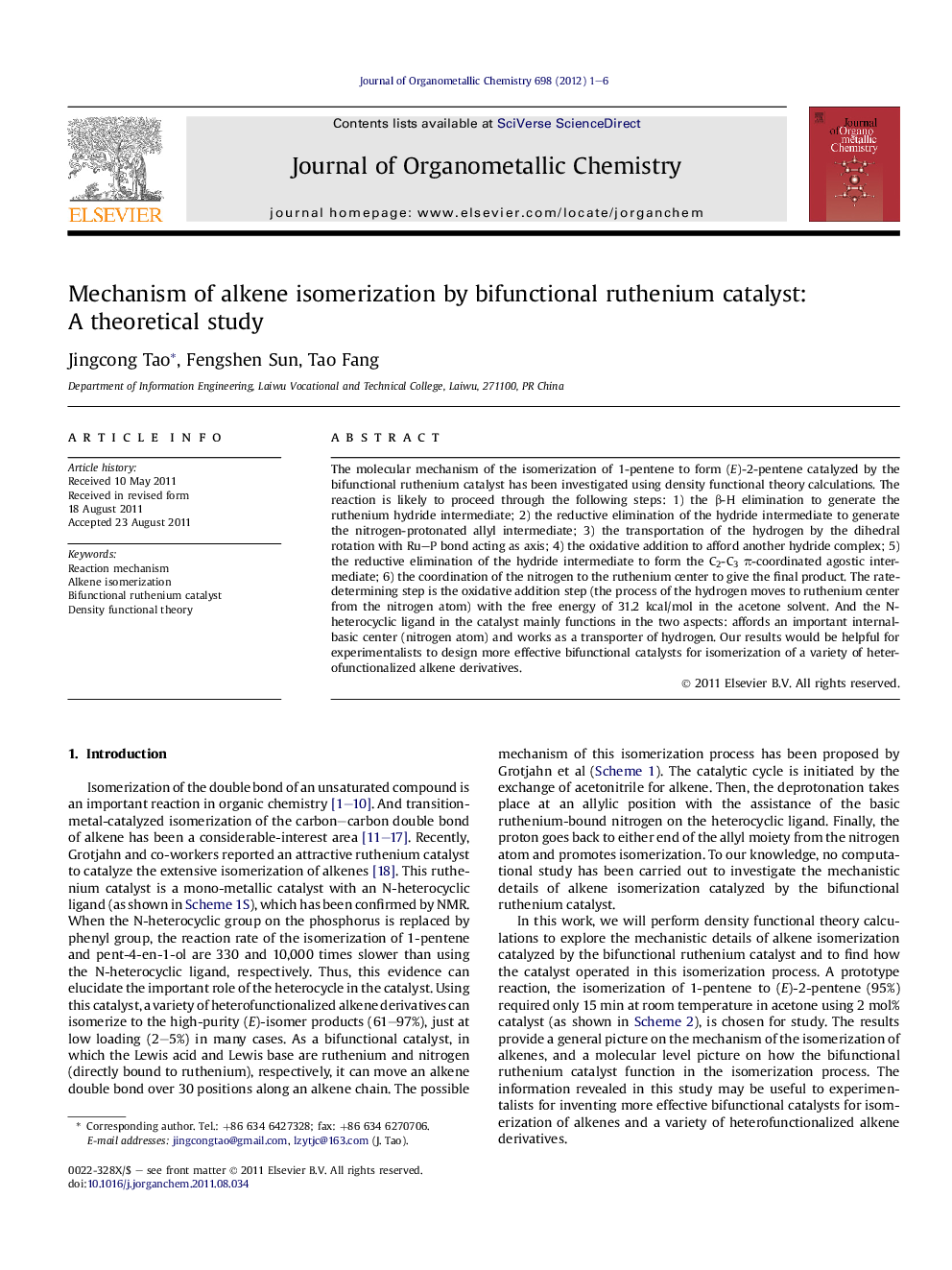| Article ID | Journal | Published Year | Pages | File Type |
|---|---|---|---|---|
| 1325005 | Journal of Organometallic Chemistry | 2012 | 6 Pages |
The molecular mechanism of the isomerization of 1-pentene to form (E)-2-pentene catalyzed by the bifunctional ruthenium catalyst has been investigated using density functional theory calculations. The reaction is likely to proceed through the following steps: 1) the β-H elimination to generate the ruthenium hydride intermediate; 2) the reductive elimination of the hydride intermediate to generate the nitrogen-protonated allyl intermediate; 3) the transportation of the hydrogen by the dihedral rotation with Ru–P bond acting as axis; 4) the oxidative addition to afford another hydride complex; 5) the reductive elimination of the hydride intermediate to form the C2-C3 π-coordinated agostic intermediate; 6) the coordination of the nitrogen to the ruthenium center to give the final product. The rate-determining step is the oxidative addition step (the process of the hydrogen moves to ruthenium center from the nitrogen atom) with the free energy of 31.2 kcal/mol in the acetone solvent. And the N-heterocyclic ligand in the catalyst mainly functions in the two aspects: affords an important internal-basic center (nitrogen atom) and works as a transporter of hydrogen. Our results would be helpful for experimentalists to design more effective bifunctional catalysts for isomerization of a variety of heterofunctionalized alkene derivatives.
Graphical abstractThe N-heterocyclic ligand in this bifunctional catalyst mainly functions in the two aspects: affords an important internal-basic center (nitrogen atom) and works as a transporter of hydrogen. The nitrogen atom (as the Lewis base) and the ruthenium atom (as the Lewis acid) can work cooperatively to promote the isomerization reaction.Figure optionsDownload full-size imageDownload as PowerPoint slideHighlights► The isomerization of 1-pentene catalyzed by the ruthenium catalyst has been studied. ► The N-heterocyclic ligand is crucial for the catalyst. ► The nitrogen and the ruthenium center can work cooperatively to promote the reaction.
